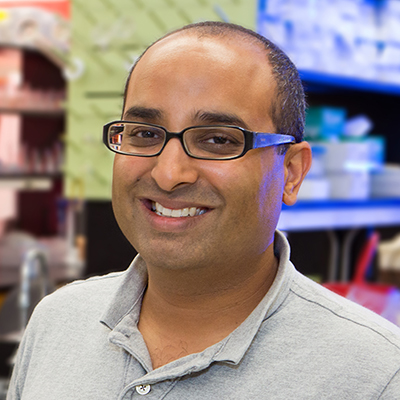
A team of researchers from Florida State University and the Mayo Clinic in Jacksonville have received $1.67 million from the National Institutes of Health to study a specific protein in the body believed to cause Alzheimer’s disease.
Florida State Associate Professor of Chemical and Biomedical Engineering Anant Paravastu and Professor of Physics Huan-Xiang Zhou, along with Mayo Clinic Department of Neuroscience researcher Terrone Rosenberry, will study the structure of the Alzheimer’s beta-amyloid protein and how it creates what is called an oligomer.
This oligomer is a nanoparticle composed of roughly 30 beta-amyloid molecules. The protein’s self-assembly process is considered key to unlocking some of the mysteries behind Alzheimer’s disease.
“Based on genetic and pathological evidence, we know that the beta amyloid is linked to Alzheimer’s disease,” Paravastu said. “We need to understand exactly how this molecule can cause neuron destruction in the brain. Understanding the oligomeric molecular structure would be an important step towards that goal.”
Most diseases are combatted by eliminating threats posed by an invading organism. Alzheimer’s disease, in contrast, is caused by a protein (beta-amyloid) that is found in the brains of all people, healthy or not. Scientists believe that Alzheimer’s disease happens when protein self-assembles to form specific toxic nanostructures. However, several different nanostructures are known to exist and it is not clear which structures cause the disease or why they are toxic.
Paravastu, Rosenberry and Zhou will use the grant to better understand the self-assembly on a fundamental level.
“We’d like to eventually make a drug that prevents toxic structures of the protein from forming,” Paravastu said. “But, we first need to understand what these structures are and how they form.”
Rosenberry’s laboratory has been able to isolate and produce high quality samples of the beta amyloid oligomers. Paravastu focuses on the structural characterization of the proteins using a technique called nuclear magnetic resonance (NMR) spectroscopy. Zhou’s laboratory will produce three-dimensional computer models of the structure.
“It takes a village to raise a research grant,” Paravastu said. “This science would not have been possible without close collaboration between very different research groups.”
The grant will be divided between Florida State and the Mayo Clinic over the next five years.




